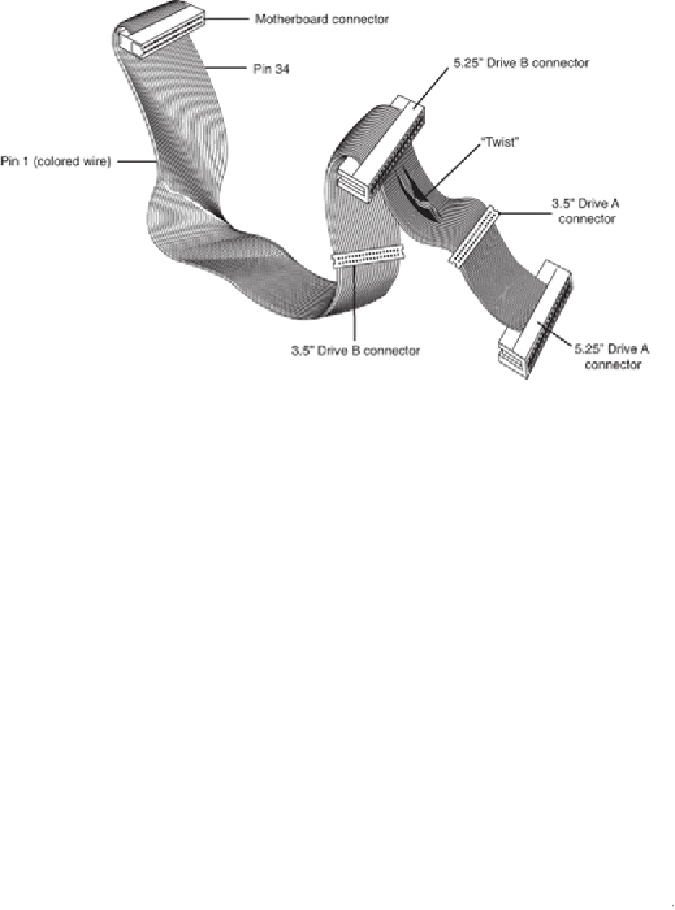Hardware Reference
In-Depth Information
Mostnonuniversalcablesincludeonlyoneortwo31/2-inchdriveconnectors.Theseomit
the edge connectors shown in
Figure 10.7
.
In addition to the connectors, the cable has a special twist that inverts the signals of wires
10-16. These are the wires carrying the Drive Select (DS) and Motor Enable signals for
each of the two drives. Old floppy disk drives have DS jumpers designed to enable you
to select whether a given drive should be recognized as A: or B:. (Really old ones allow a
third and fourth setting as well.)
You might not even know that these jumpers exist because the twist in the cable prevents
you from having to adjust them, and as such they have been eliminated from most drives.
When two floppy disk drives are installed in one system (admittedly a rarity nowadays),
the cable electrically changes the DS configuration of the drive that is plugged in after the
twist. Thus, the twist causes a drive physically set to the second DS position (B:) to ap-
pear to the controller to be set to the first DS position (A:). The adoption of this cable has
enabledtheuseofastandardjumperconfigurationforallfloppydiskdrives,regardlessof
whether you install one or two drives in a computer.
If you install only a single floppy disk drive, it plugs in to the connector after the twist,
whichcausesthedrivetoberecognizedasdriveA:.Althoughit'sseldomnecessarytoday,
some systems have a BIOS setup option enabling you to swap drives A: and B: without
adjusting drive cables.


